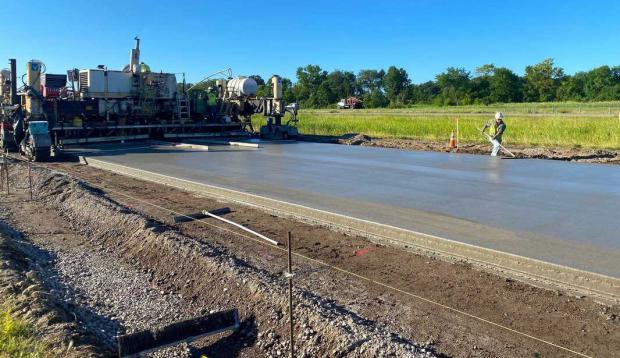
Breaking News
Researchers discover revolutionary material that could shatter the limits of traditional solar panel
 Scientists Tested 8 Famous Cities. Only 1 Met The Standard For Tree Cover
Scientists Tested 8 Famous Cities. Only 1 Met The Standard For Tree Cover
How Long You Can Balance on 1 Leg Reveals Neuromuscular Aging
Leukemia: Symptoms, Causes, Treatments, and Natural Approaches
Top Tech News
 Forget Houston. This Space Balloon Will Launch You to the Edge of the Cosmos From a Floating...
Forget Houston. This Space Balloon Will Launch You to the Edge of the Cosmos From a Floating...
 SpaceX and NASA show off how Starship will help astronauts land on the moon (images)
SpaceX and NASA show off how Starship will help astronauts land on the moon (images)
 How aged cells in one organ can cause a cascade of organ failure
How aged cells in one organ can cause a cascade of organ failure
 World's most advanced hypergravity facility is now open for business
World's most advanced hypergravity facility is now open for business
 New Low-Carbon Concrete Outperforms Today's Highway Material While Cutting Costs in Minnesota
New Low-Carbon Concrete Outperforms Today's Highway Material While Cutting Costs in Minnesota
 Spinning fusion fuel for efficiency and Burn Tritium Ten Times More Efficiently
Spinning fusion fuel for efficiency and Burn Tritium Ten Times More Efficiently
 Rocket plane makes first civil supersonic flight since Concorde
Rocket plane makes first civil supersonic flight since Concorde
 Muscle-powered mechanism desalinates up to 8 liters of seawater per hour
Muscle-powered mechanism desalinates up to 8 liters of seawater per hour
 Student-built rocket breaks space altitude record as it hits hypersonic speeds
Student-built rocket breaks space altitude record as it hits hypersonic speeds
 Researchers discover revolutionary material that could shatter limits of traditional solar panels
Researchers discover revolutionary material that could shatter limits of traditional solar panels
New Low-Carbon Concrete Outperforms Today's Highway Material While Cutting Costs in Minnesota

Concrete and its most important ingredient, cement, is one of the most carbon-intensive industries on Earth because it's used so often in construction. It has virtually no parallels for the ease of use, versatility, and structural properties, but emits about 0.6 tons of carbon per 1 ton of cement mixture produced according to Imperial College London.
US firm Carbon Upcycling Technologies, in collaboration with the Minnesota Department of Transportation (MnDOT) has successfully completed a three-year study on the use of the company's low-carbon cement in highways.
The results highlight Carbon Upcycling's ability to be a drop-in solution for reducing carbon-intensive cement in concrete, while saving money and making stronger roads.
The work in the study was carried out by Sutter Engineering and sponsored by the National Road Research Alliance (NRRA). It rigorously tested 16 unique concrete mixtures in real-world conditions on an active Minnesota highway to identify options that could reduce the carbon footprint of infrastructure without sacrificing strength or durability.
Completed in early 2024, the study aimed to find materials that could significantly lower the carbon footprint of concrete paving without compromising durability. Carbon Upcycling's CO2-enhanced mix achieved a 12.5% reduction in cement content while matching the workability of traditional concrete, allowing seamless handling, placement, and setting times for construction crews.
"Infrastructure is the very foundation of a sustainable future, and at Carbon Upcycling we're committed to creating materials that support this vision while establishing a secure, stable North American supply chain," said Apoorv Sinha, CEO of Carbon Upcycling.
"Our collaboration with the Minnesota Department of Transportation highlights how Carbon Upcycling can transform captured emissions into local materials that strengthen our infrastructure. By focusing on resilience and sustainability, we're contributing to a vision where our essential structures are clean and built to last."



